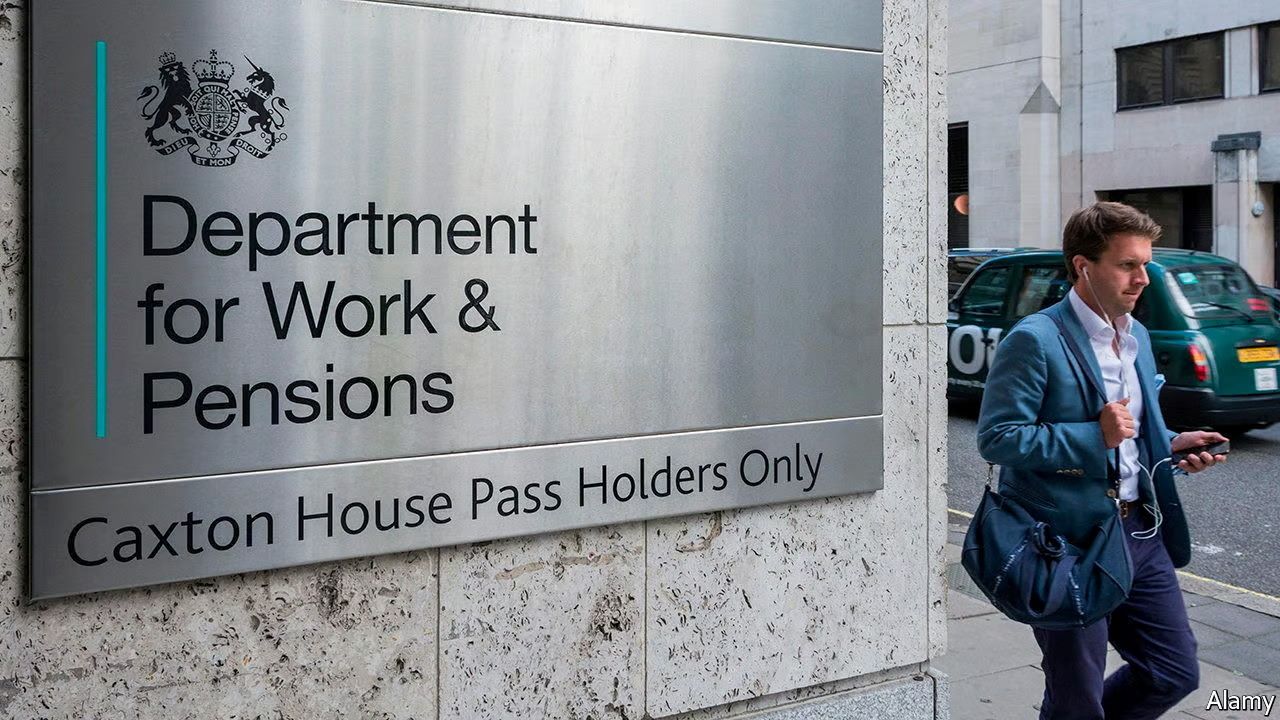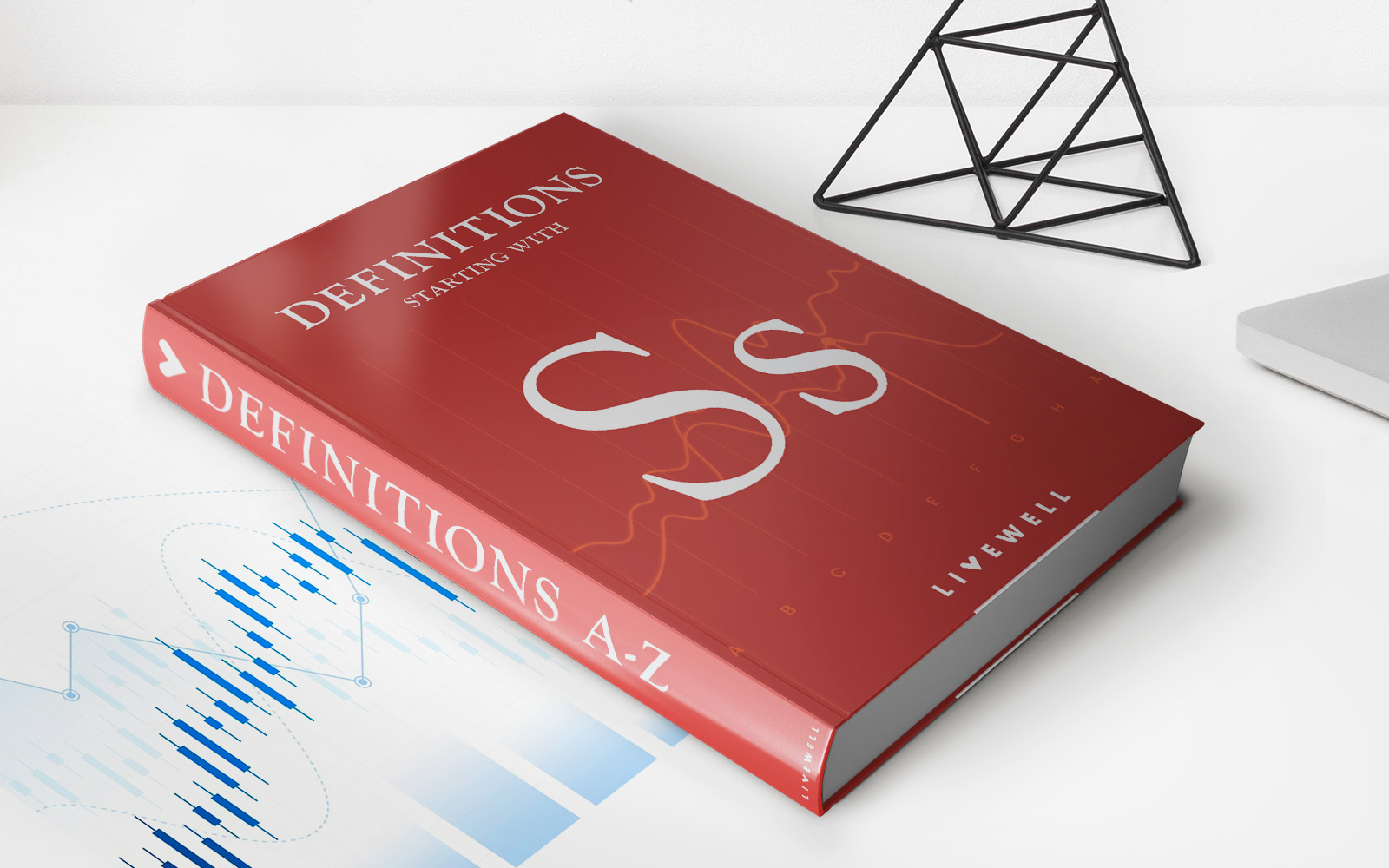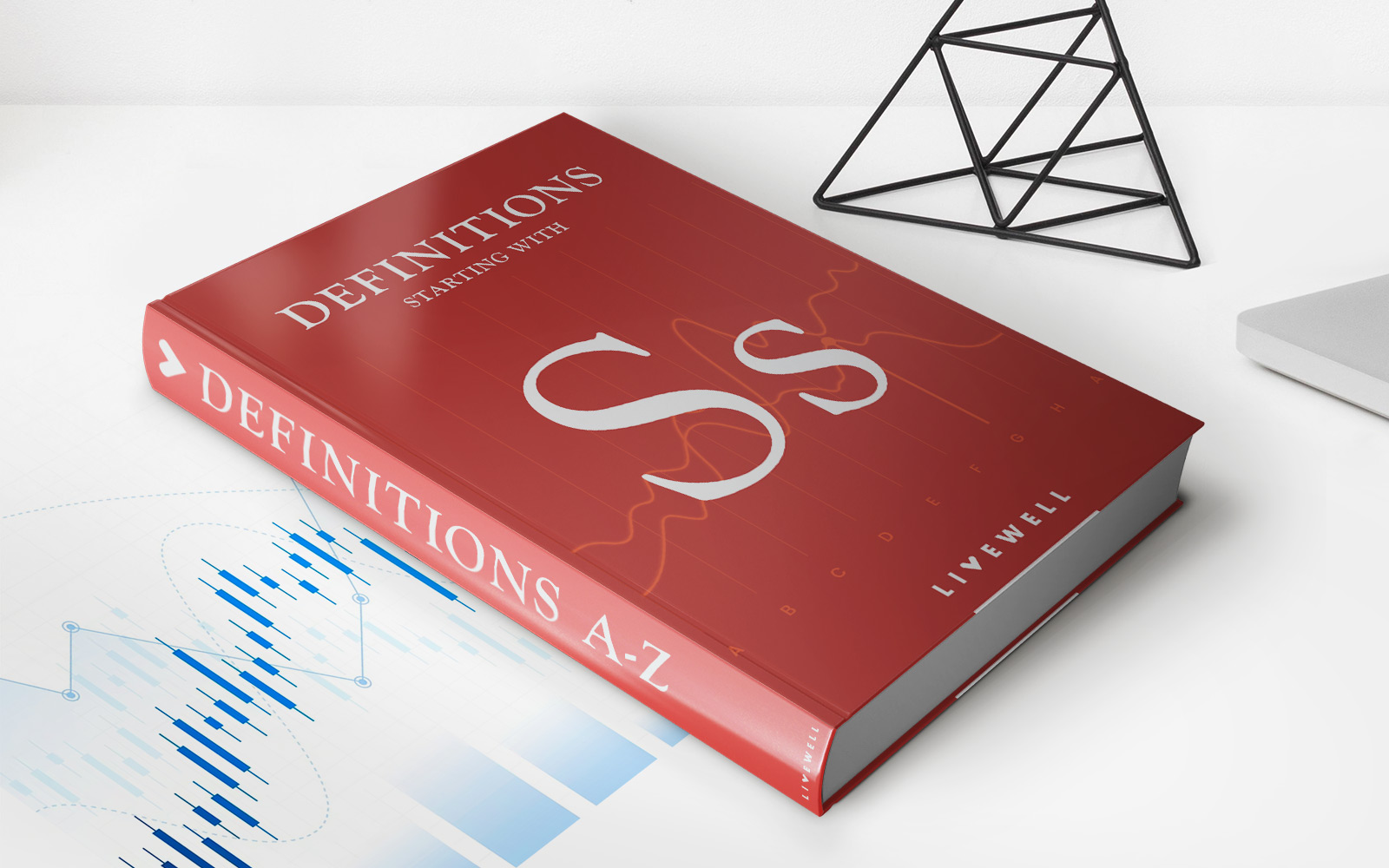

Finance
How Does Litigation Funding Work
Published: December 22, 2023
Discover how litigation funding works and its role in financing legal expenses. Explore the finance options available to support your legal case and ensure access to justice.
(Many of the links in this article redirect to a specific reviewed product. Your purchase of these products through affiliate links helps to generate commission for LiveWell, at no extra cost. Learn more)
Table of Contents
- Introduction
- What is Litigation Funding?
- The Process of Litigation Funding
- Eligibility Criteria for Litigation Funding
- Pros and Cons of Litigation Funding
- Types of Litigation Funding
- How to Apply for Litigation Funding
- Understanding Litigation Funding Agreements
- How Litigation Funding Works for Plaintiffs
- How Litigation Funding Works for Law Firms
- Frequently Asked Questions about Litigation Funding
- Conclusion
Introduction
Litigation funding, also known as legal financing or litigation finance, is a mechanism that provides financial support to individuals or businesses involved in legal disputes. It allows plaintiffs to pursue their claims without worrying about the high costs associated with litigation, such as legal fees, court costs, and other related expenses. Litigation funding can level the playing field by providing access to capital for those who might not otherwise be able to afford the costs of a lawsuit.
This form of financing has gained significant popularity in recent years, as it provides a way for individuals and businesses to seek justice while managing the financial burden of litigation. It allows plaintiffs to focus on their case without the added stress of financial constraints and enables law firms to take on complex cases without the risk of financial loss.
Historically, litigation funding was primarily utilized in personal injury and medical malpractice cases. However, it has expanded to a wide range of practice areas, including commercial litigation, intellectual property disputes, employment claims, and class actions. As litigation funding continues to evolve, it has become an integral part of the legal landscape, reshaping the way legal matters are pursued and resolved.
In this article, we will delve into the world of litigation funding, exploring how it works, its pros and cons, the different types of funding available, and the eligibility criteria for obtaining funding. Whether you are a plaintiff seeking financial support or a law firm considering litigation funding as a strategic option, this comprehensive guide will provide you with a solid understanding of the process and help you navigate the complexities of this financing model.
What is Litigation Funding?
Litigation funding, also known as legal financing or third-party funding, is a practice where a third-party provides financial support to individuals or businesses involved in a legal dispute. This funding allows plaintiffs to cover the costs associated with litigation, including legal fees, court costs, and other related expenses. In return, the funder receives a percentage of the settlement or judgment if the case is successful.
One of the key aspects of litigation funding is that it is non-recourse, meaning that if the case is not successful, the plaintiff is not required to repay the funding. This aspect helps to mitigate the financial risk for plaintiffs by shifting the burden of financing the lawsuit to the funder.
Traditionally, litigation funding was utilized primarily by individuals who lacked the financial resources to pursue their claims. However, it has evolved to include businesses and law firms that see the value in accessing outside capital to fund litigation expenses and manage their litigation risk.
There are different types of litigation funding arrangements, including:
- Single case funding: This is the most common form of litigation funding where a third-party funder provides capital for a specific lawsuit. The funder evaluates the merits of the case and makes a decision to invest based on their assessment of its potential success.
- Portfolio funding: In portfolio funding, the funder provides financial support for multiple cases within a portfolio. This approach allows plaintiffs or law firms to access funding for a range of cases, streamlining the process and potentially reducing costs.
- Defense funding: Defense funding is a type of litigation funding where the funder provides capital to defendants to cover their legal expenses. This can be particularly beneficial for businesses facing costly litigation where they need financial support to mount a robust defense.
Litigation funding can provide numerous benefits for plaintiffs and law firms. For plaintiffs, it enables access to justice by removing the financial barrier that often prevents individuals from pursuing their legal rights. It can also level the playing field by allowing plaintiffs to go up against well-funded opponents without incurring substantial financial risk.
For law firms, litigation funding can offer a competitive advantage by allowing them to take on more cases and expand their practice areas. It can also provide a steady source of income and reduce the financial strain associated with lengthy and expensive litigation.
Overall, litigation funding has revolutionized the legal landscape by making it more accessible and affordable for individuals and businesses to pursue their legal claims. It has become an essential tool for those seeking justice and a strategic option for law firms looking to grow their practice.
The Process of Litigation Funding
The process of litigation funding involves several key steps that both plaintiffs and funders need to navigate. Understanding this process can help individuals and businesses make informed decisions and ensure a smooth funding arrangement. Here is a breakdown of the typical process of litigation funding:
- Initial Evaluation: The process begins with an initial evaluation where the plaintiff or the law firm seeking funding submits the details of the case to the potential funder. This includes information about the claim, supporting evidence, legal analysis, and an estimate of the damages sought.
- Case Assessment: The funder then conducts a thorough assessment of the case to determine its viability and potential for success. They assess factors such as the strength of the legal arguments, the credibility of the witnesses, the potential damages recoverable, and the overall litigation strategy.
- Financial Evaluation: Alongside the case assessment, the funder evaluates the financial aspect of the litigation. They consider the anticipated costs, including legal fees, expert witness fees, court costs, and any other expenses associated with the case. This evaluation helps the funder determine the appropriate funding amount.
- Term Negotiation: Once the funder determines the case’s potential, they enter into negotiations with the plaintiff or law firm to establish the terms of the funding agreement. This includes discussing the funding amount, the percentage of the potential recovery to be shared with the funder, and any other terms and conditions.
- Due Diligence: Before finalizing the agreement, the funder typically conducts due diligence on the plaintiff or law firm. This may involve evaluating their financial stability, legal track record, and credibility. It ensures that the funder is making an informed decision and mitigates the risk of entering into a funding arrangement with an unreliable party.
- Execution of Agreement: Once the terms are agreed upon, the funding agreement is executed between the parties involved. This legally binding agreement outlines the rights and obligations of both the funder and the plaintiff or law firm. It includes details such as the funding amount, the percentage of the recovery to be paid to the funder, the repayment terms, and any other provisions specific to the agreement.
- Funding Disbursement: After the agreement is executed, the funder disburses the agreed-upon funding amount to the plaintiff or law firm. This provides the necessary capital to cover the ongoing litigation expenses.
- Litigation Process: Throughout the litigation process, the plaintiff or law firm uses the funding to cover legal fees, court costs, expert witness fees, and other expenses associated with the case. The funder is typically not involved in the decision-making process or the day-to-day management of the case.
- Repayment and Sharing of Recovery: If the case is successful, and a settlement or judgment is reached, the funder is entitled to a percentage of the recovery as outlined in the funding agreement. This amount is typically deducted from the recovery before the remaining funds are disbursed to the plaintiff or law firm.
- If the Case is Unsuccessful: In the event that the case is unsuccessful, the plaintiff is typically not required to repay the funding amount to the funder. This non-recourse nature of litigation funding shifts the financial risk from the plaintiff to the funder.
The process of litigation funding can vary depending on the specific circumstances and the terms negotiated between the parties. It is essential for plaintiffs and law firms to carefully consider the terms and choose a reputable and experienced funder who understands their needs and goals.
Eligibility Criteria for Litigation Funding
While litigation funding offers a valuable financial option for plaintiffs and law firms, not all cases or parties may qualify for funding. Funding providers typically have specific eligibility criteria in place to assess the viability and potential profitability of a case. Here are some common factors that may be considered when determining eligibility for litigation funding:
- Meritorious Case: Funders typically seek cases with strong legal merit and a high likelihood of success. They evaluate the legal arguments, evidence, and expert opinions to assess the strength of the case. Cases with a higher probability of success are more likely to meet the eligibility criteria.
- Minimum Damages: Funding providers often have a minimum threshold for the damages sought in a case. This ensures that the potential recovery is substantial enough to justify the funding arrangement. The specific threshold may vary depending on the funder and the type of case.
- Size and Complexity of the Case: The size and complexity of the case can also impact eligibility for funding. Funders may prefer cases that have a significant financial value or involve complex legal issues. This is because such cases often have higher potential recoveries, making them more attractive for funding.
- Viable Defendant: The financial strength and viability of the defendant can play a role in the eligibility assessment. Funders consider whether the defendant has the resources to pay the potential judgment or settlement. If the defendant is insolvent or lacks assets, it may affect the likelihood of recovering the funding amount.
- Legal Representation: The qualifications and experience of the legal team representing the plaintiff or law firm can be a factor. Funders often prefer cases where the plaintiff is represented by reputable and experienced attorneys who have a successful track record in similar types of litigation.
- Disclosure and Cooperation: Transparency and cooperation from the plaintiff or law firm are essential in the evaluation process. Funders may require access to relevant case materials, including legal documents, evidence, and expert reports. Open communication and cooperation improve the funders’ ability to assess the case’s potential and make an informed decision.
- Solvent Plaintiff: While litigation funding is designed to help plaintiffs alleviate financial burdens, funders do evaluate the plaintiff’s financial stability. This is to ensure that the plaintiff can meet any personal expenses not covered by the funding and to assess the risk of potential conflicts of interest or moral hazards.
It is important to note that the eligibility criteria can vary between litigation funding providers. While some may have stricter criteria, others may be more flexible. Therefore, it is advisable to research and approach multiple funding providers to find the one that aligns with the specific needs and circumstances of the case.
Overall, litigation funding offers a way for plaintiffs and law firms to access the financial resources needed to pursue their legal claims. By meeting the eligibility criteria, parties can increase their chances of securing funding and receive the necessary support to navigate the complex and costly litigation process.
Pros and Cons of Litigation Funding
Litigation funding can offer significant benefits to plaintiffs and law firms, but it also comes with certain drawbacks. Understanding the pros and cons of litigation funding is crucial to making an informed decision about whether to pursue this financing option. Here are some of the key advantages and disadvantages:
Pros of Litigation Funding:
- Financial Relief: Litigation funding provides plaintiffs with much-needed financial support to cover legal expenses, allowing them to pursue their claims without the burden of upfront costs.
- Leveling the Playing Field: Legal disputes can be financially demanding, making it difficult for individuals and smaller businesses to compete with well-funded opponents. Litigation funding helps level the playing field by providing the necessary capital to go up against larger adversaries.
- Risk Mitigation: Litigation is inherently risky, and plaintiffs face the possibility of losing their case and incurring significant financial losses. With litigation funding, the financial risk is shifted to the funder, providing plaintiffs with peace of mind and protection from substantial expenses.
- Access to Top Legal Representation: Funding can enable plaintiffs to afford qualified and experienced attorneys who may have higher hourly rates. This ensures that they have the best possible legal representation to advocate for their claims.
- Opportunity to Maximize Recovery: With litigation funding, plaintiffs can potentially pursue their claims more vigorously, as they are not constrained by limited financial resources. This can lead to larger settlements or judgments and maximized recovery.
Cons of Litigation Funding:
- Cost of Funding: Litigation funding comes with a cost, typically in the form of a percentage of the recovery. This means that plaintiffs may receive a lower net settlement or judgment amount than they would without funding.
- Loss of Control: When entering into a funding arrangement, plaintiffs may have to cede some control over the litigation process. The funder may have input into decisions such as settlement negotiations or the acceptance of offers, potentially conflicting with the plaintiff’s desired outcome.
- Confidentiality Concerns: Litigation funding arrangements may require disclosure of case details to the funder, potentially compromising the confidentiality of sensitive information. However, reputable funders have stringent confidentiality terms in their agreements to safeguard the client’s information.
- Perceived Influence on the Case: Opponents may argue that the involvement of a third-party funder can create a perception of bias or influence on the case, potentially impacting the jury’s or judge’s perception of the plaintiff’s motives.
- Impact on Settlement Negotiations: Defendants may take litigation funding into account during settlement negotiations, potentially affecting their offers. They may assume that plaintiffs have the financial means to continue the litigation, resulting in lower settlement offers.
It is crucial for plaintiffs and law firms to carefully weigh the advantages and disadvantages when considering litigation funding. Conducting thorough research, consulting with legal counsel, and evaluating the financial and strategic implications can help make an informed decision that aligns with the specific circumstances of the case.
Types of Litigation Funding
Litigation funding encompasses various models and approaches designed to meet the specific needs of plaintiffs and law firms involved in legal disputes. Understanding the different types of litigation funding can help individuals and businesses choose the most suitable option for their circumstances. Here are some common types:
- Traditional Third-Party Funding: This is the most prevalent form of litigation funding where a third-party funder provides capital to cover the costs of a specific lawsuit. The funding is typically non-recourse, meaning that if the case is unsuccessful, the plaintiff is not required to repay the funding. In return, the funder receives a portion of the settlement or judgment if the case is successful.
- Portfolio Funding: Portfolio funding involves a funder providing financial support for multiple cases rather than focusing on a single lawsuit. This approach is beneficial for law firms and plaintiffs handling multiple litigation matters. It allows them to access funding for a range of cases, streamlining the process and potentially reducing costs.
- Law Firm Funding: Law firm funding is a type of financing where a funder provides capital directly to a law firm to cover its legal expenses. The funding can help support the firm’s ongoing operations, including case-related costs, marketing, and business development initiatives. Law firm funding is typically repaid through a percentage of the firm’s future revenues or settlements.
- Post-Settlement Funding: Post-settlement funding, also known as post-judgment funding, occurs when a funder provides funding to plaintiffs who have already won a settlement or judgment. This type of funding allows plaintiffs to access immediate funds rather than waiting for the lengthy settlement payout process. The funder receives a percentage of the settlement amount when it is eventually disbursed to the plaintiff.
- Appeals Funding: Appeals funding is specifically tailored to the appellate stage of a legal case. Appellate litigation can be time-consuming and costly. Appeals funding provides financial support to cover legal fees and expenses during the appeals process. The funding is typically repaid if the appeal is successful and results in a favorable outcome for the plaintiff.
- International Litigation Funding: International litigation funding involves the financing of legal disputes that cross national borders. It helps plaintiffs navigate the complexities of multi-jurisdictional litigation, including the payment of foreign legal fees and the management of international legal risks. International litigation funding is especially beneficial in cases where the plaintiff lacks the financial resources to pursue claims in multiple jurisdictions.
These are just a few examples of the types of litigation funding available. Each type has its unique features, benefits, and considerations. It is important for plaintiffs and law firms to assess their specific needs and explore various funding options to choose the one that aligns best with their circumstances.
How to Apply for Litigation Funding
Applying for litigation funding involves a structured process that allows plaintiffs or law firms to present their case to potential funders for evaluation. Here are the general steps to follow when applying for litigation funding:
- Gather Case Information: Start by gathering all relevant information about the case, including legal documents, court filings, expert reports, and any supporting evidence. This helps provide a comprehensive overview of the case for the funder’s evaluation.
- Research and Identify Potential Funders: Conduct thorough research to identify reputable litigation funders who specialize in the type of case or practice area relevant to your situation. Consider factors such as their track record, experience, funding terms, and reputation in the industry.
- Prepare a Funding Request: Prepare a funding request that outlines the details of the case, including the legal issues, the parties involved, the damages sought, and the litigation strategy. It should also include an estimate of the costs and expenses associated with the case.
- Submit the Funding Request: Submit the funding request to the chosen funders for evaluation. This can be done through an online application form on their website or by directly contacting their team to express interest in funding.
- Due Diligence and Evaluation: The funder will conduct due diligence on the case and may request additional information or documentation. They will assess the merits, potential risks, and financial viability of the case to determine if it aligns with their investment criteria.
- Negotiate Funding Terms: If the funder expresses interest in funding the case, negotiations will take place to determine the funding amount, the percentage of the recovery to be shared, and other terms and conditions. It is crucial to carefully review the terms and seek legal advice if needed to ensure a fair and favorable agreement.
- Execute the Funding Agreement: Once the terms are agreed upon, a funding agreement will be executed between the plaintiff or law firm and the funder. The agreement outlines the rights, obligations, and responsibilities of both parties and provides a legal framework for the funding arrangement.
- Disbursement of Funding: After the agreement is executed, the funder will disburse the agreed-upon funding amount to the plaintiff or law firm. These funds can then be used to cover legal fees, court costs, expert fees, and other litigation-related expenses.
- Case Progress and Reporting: Throughout the litigation process, the plaintiff or law firm will provide updates on the case’s progress to the funder as specified in the funding agreement. This may include regular reports, correspondence, or meetings to keep the funder informed.
- Repayment and Sharing of Recovery: If the case is successful and a settlement or judgment is obtained, the funder will receive its agreed-upon share of the recovery. The remaining funds will be disbursed to the plaintiff or law firm according to the terms outlined in the funding agreement.
It is important to note that the application process for litigation funding may vary slightly between funders. Some may require specific forms or documentation, while others may have different evaluation criteria. It is advisable to thoroughly research each funder’s application process and requirements to ensure a smooth and efficient application.
By following these steps and working closely with the chosen funder, plaintiffs and law firms can increase their chances of securing litigation funding and obtaining the financial support needed to pursue their legal claims.
Understanding Litigation Funding Agreements
Litigation funding agreements are legally binding contracts that establish the terms and conditions of the funding arrangement between the plaintiff or law firm and the funder. Understanding these agreements is crucial to ensuring a clear understanding of rights, obligations, and the financial implications of the funding. Here are key elements typically included in a litigation funding agreement:
- Funding Amount: The agreement specifies the agreed-upon funding amount that the funder will provide to the plaintiff or law firm. This amount is typically based on an evaluation of the case’s potential and the estimated costs associated with litigation.
- Percentage of Recovery: The agreement outlines the percentage of the settlement or judgment that will be allocated to the funder. This is typically a predetermined share of the recovery and is repaid to the funder once the case is resolved successfully.
- Repayment Terms: The terms of repayment detail when and how the funder will be repaid. This may occur upon the settlement or judgment disbursement or through installment payments over a specified period.
- Costs and Expenses: The agreement typically addresses the reimbursement of costs and expenses incurred during the litigation process. This may include attorneys’ fees, court filing fees, expert witness fees, and any other legal expenses. It defines which party is responsible for these costs and how they will be reimbursed.
- Confidentiality: Confidentiality clauses are included to protect sensitive case information. The agreement outlines the parties’ responsibilities to maintain confidentiality and may provide remedies for breaches of confidentiality.
- Term and Termination: The agreement specifies the duration of the funding arrangement and outlines the conditions under which either party can terminate the agreement. It may include termination clauses related to settlement offers, changes in circumstances, or breaches of the agreement.
- Declaration of Independence: To maintain the attorney-client privilege, the agreement may include a declaration of independence, stating that the funder does not have control over the litigation strategy or decision-making process.
- Governing Law and Jurisdiction: The agreement stipulates the governing law under which disputes arising from the agreement will be resolved and the jurisdiction where any legal proceedings related to the agreement will take place.
- Assignment: The agreement may address the ability of either party to assign or transfer their rights and obligations under the agreement to a third party.
- Indemnification: Indemnification clauses may be included to address liability and to ensure that the funder is protected from adverse costs or expenses arising from the litigation.
It is important for both parties to carefully review the litigation funding agreement before signing. Consulting with legal counsel can help ensure a thorough understanding of the terms and identify any potential concerns or areas for negotiation. Clear communication and transparency between the plaintiff or law firm and the funder are essential for a successful and mutually beneficial funding relationship.
Remember, each litigation funding agreement is unique and may vary depending on the funder and the specific circumstances of the case. It is crucial to review and understand the terms and implications of the agreement to make informed decisions throughout the litigation process.
How Litigation Funding Works for Plaintiffs
Litigation funding provides significant benefits to plaintiffs by alleviating the financial burden of pursuing a legal claim. Here is an overview of how litigation funding works for plaintiffs:
Access to Justice: Litigation funding allows plaintiffs who lack sufficient financial resources to pursue their legal claims. By providing upfront capital, it eliminates the need for out-of-pocket expenses and levels the playing field, ensuring that individuals and smaller businesses have a fair chance of seeking justice.
Case Evaluation: When considering litigation funding, plaintiffs typically submit the details of their case to potential funders. Funders conduct comprehensive evaluations of the case, considering factors such as legal merits, potential damages, and the likelihood of success.
Financial Support: Once approved for funding, plaintiffs receive the agreed-upon funding amount, which can be used to cover various legal expenses. This includes legal fees, court costs, expert witness fees, document production costs, and other litigation-related expenses.
Non-Recourse Funding: One of the key advantages for plaintiffs is that litigation funding is typically non-recourse. This means that if the case is unsuccessful and no recovery is obtained, plaintiffs are not required to repay the funding amount. The financial risk is assumed by the funder, providing plaintiffs with financial security.
Focus on the Case: With the financial burden lifted, plaintiffs can focus on building their case without worrying about mounting costs. They can prioritize their energy on pursuing justice, gathering evidence, and engaging in settlement negotiations or trial proceedings.
Funds for Living Expenses: Litigation funding can also help cover personal living expenses during the legal proceedings. This is particularly beneficial for plaintiffs who may be unable to work due to their legal case and require financial support to meet their daily necessities.
Maximized Recovery: By accessing litigation funding, plaintiffs can pursue their claims more vigorously. This often leads to stronger negotiation positions and the ability to resist early, low-value settlement offers. With the financial resources to support their case, plaintiffs can focus on achieving an optimal outcome and maximizing their recovery.
Sharing Recovery: In successful cases, where a settlement or judgment is obtained, plaintiffs are required to share a portion of the recovery with the funder based on the agreed-upon percentage. This allows the funder to recoup their investment and share in the success of the case.
In summary, litigation funding provides plaintiffs with the financial means to pursue their legal claims without incurring upfront costs or bearing the risk of losing their case. By eliminating financial barriers, plaintiffs can focus on seeking justice, improving their chances of a favorable outcome, and obtaining fair compensation for their losses.
How Litigation Funding Works for Law Firms
Litigation funding offers significant advantages to law firms by providing them with the financial resources needed to handle complex and costly litigation. Here’s an overview of how litigation funding works for law firms:
Expanding Case Load: Litigation funding allows law firms to take on a wider range of cases by alleviating the financial burden associated with litigation. Law firms can pursue complex and high-value cases that they may have otherwise declined due to the potential financial risks involved.
Financial Stability: By securing litigation funding, law firms can stabilize their cash flow and minimize the financial strain of ongoing litigation expenses. This stability enables law firms to cover operating costs, pay staff salaries, invest in technology and infrastructure, and grow their practice.
Higher-Quality Legal Representation: With litigation funding, law firms can attract and retain top legal talent by offering competitive compensation and resources. Adequate financial support enables law firms to hire experienced attorneys and experts, enhancing the quality of legal representation they provide to clients.
Risk Mitigation: Litigation funding shifts the financial risk associated with pursuing litigation from the law firm to the funder. If a case is unsuccessful, the law firm is not responsible for repaying the funding. This risk mitigation allows law firms to take on more challenging cases without the fear of incurring significant losses.
Additional Litigation Expertise: In some litigation funding arrangements, funders may provide access to their network of litigation experts, which can supplement the knowledge and expertise of the law firm. This collaboration can strengthen the case strategy, improve legal arguments, and increase the chances of success.
Enhanced Competitive Advantage: With the financial backing of litigation funding, law firms can compete with larger firms that have substantial resources. They can pursue high-value cases, compete for top clients and complex matters, and position themselves as formidable contenders in the legal industry.
Improved Client Relationships: By utilizing litigation funding, law firms can provide better service to their clients. Clients benefit from the law firm’s ability to manage expenses, pursue litigation without delays or compromises, and navigate lengthy legal proceedings more effectively.
Potential Fee Sharing: In some cases, law firms may enter into fee-sharing arrangements with litigation funders, allowing them to receive a share of the recovery in addition to their legal fees. This can provide an additional revenue stream for the firm, incentivizing them to pursue cases vigorously and enhance their profitability.
In summary, litigation funding enables law firms to expand their client base, undertake complex cases, and strengthen their financial position. By alleviating the financial risks and providing much-needed resources, litigation funding empowers law firms to enhance their services, attract top legal talent, and position themselves competitively in the legal marketplace.
Frequently Asked Questions about Litigation Funding
Here are some commonly asked questions about litigation funding:
Q: What types of cases are eligible for litigation funding?
Most types of civil litigation cases can be eligible for litigation funding. This includes personal injury, commercial disputes, intellectual property disputes, employment claims, class actions, and more. The eligibility criteria may vary between funders, so it is best to inquire directly with potential funding providers about the types of cases they specialize in.
Q: How does litigation funding differ from a traditional loan?
Unlike traditional loans, litigation funding is non-recourse, meaning that the plaintiff is not personally liable for repayment if the case is unsuccessful. In contrast, traditional loans require repayment regardless of the outcome of the case. Litigation funding is also typically based on the merits of the case rather than the plaintiff’s creditworthiness.
Q: How is the funding amount determined?
The funding amount is typically determined through a careful evaluation of the case’s potential merits, including factors such as the strength of the legal arguments, the potential damages sought, and the estimated costs of litigation. Funders may consider expert opinions, legal analysis, and other relevant factors when determining the appropriate funding amount.
Q: Do funders have a say in litigation strategy or settlement decisions?
No, litigation funders typically do not have control over the litigation strategy or settlement decisions. They do not interfere with the attorney-client relationship or the day-to-day management of the case. The plaintiff and their legal team maintain control over the litigation process and decision-making.
Q: How is the funder repaid if the case is successful?
If the case is successful and a settlement or judgment is obtained, the funder is typically repaid from the recovered funds. The funder’s share is deducted from the total recovery, and the remaining amount is disbursed to the plaintiff or the law firm according to the terms agreed upon in the funding agreement.
Q: Are there any restrictions on how the funding can be used?
In general, litigation funding can be used to cover legal fees, court costs, expert witness fees, document production costs, and other litigation-related expenses. However, there may be certain restrictions outlined in the funding agreement. It is advisable to review the agreement to ensure compliance with any specified restrictions.
Q: What happens if the case is unsuccessful?
If the case is unsuccessful and no recovery is obtained, the plaintiff is typically not required to repay the funding. Litigation funding is non-recourse, shifting the financial risk from the plaintiff to the funder. The plaintiff is generally not liable for any repayment if the case is not successful.
Q: What if I already have an attorney working on my case?
Litigation funding is available to plaintiffs who already have legal representation. In fact, having an attorney can facilitate the funding process, as the funder can assess the case’s strength and potential with the guidance of an experienced legal professional.
Q: Is litigation funding available globally?
Yes, litigation funding is available in many countries around the world. While the specifics of litigation funding may vary from jurisdiction to jurisdiction, the concept and benefits of funding litigation are increasingly recognized on a global scale.
Q: How long does the litigation funding process usually take?
The timeline for securing litigation funding can vary depending on the complexity of the case, the extent of due diligence required, and the negotiation process between the parties. Typically, the process can take a few weeks to a couple of months from the initial application to the execution of the funding agreement.
If you have more specific questions about litigation funding, it is advisable to consult directly with a litigation funding provider or legal professionals with expertise in this area.
Conclusion
Litigation funding has emerged as a valuable resource for individuals, businesses, and law firms involved in legal disputes. By providing financial support and risk mitigation, litigation funding has transformed the landscape of legal proceedings, offering access to justice and the ability to pursue claims that might have otherwise been unattainable due to financial constraints.
For plaintiffs, litigation funding offers the opportunity to level the playing field against well-funded opponents. It alleviates the burden of upfront costs, enables access to top legal representation, and provides financial stability throughout the litigation process. Litigation funding empowers plaintiffs to seek fair compensation for their losses, maximize their recovery, and navigate complex legal proceedings with confidence.
Law firms also benefit from litigation funding by expanding their case load, attracting and retaining top legal talent, and improving financial stability. The availability of funding allows law firms to pursue high-value cases, mitigate the financial risks associated with litigation, and compete with larger firms in the legal marketplace.
While litigation funding has numerous advantages, it is essential to carefully consider the terms and implications of funding agreements. Understanding the funding process, eligibility criteria, and the potential impact on litigation strategy is crucial for plaintiffs and law firms seeking to utilize litigation funding effectively.
As litigation funding continues to evolve, it is important for plaintiffs, law firms, and funders to maintain transparency, open communication, and a clear understanding of the expectations and responsibilities outlined in the funding agreements. Effective collaboration between all parties involved fosters a strong foundation for successful litigation outcomes.
In conclusion, litigation funding provides a valuable solution to the financial challenges that often accompany legal disputes. It enhances access to justice, promotes fairness, and supports the pursuit of legal rights. By exploring the various types of litigation funding available, understanding the process, and carefully evaluating the terms of funding agreements, individuals and law firms can make informed decisions that align with their specific needs and goals. Litigation funding continues to revolutionize the legal landscape, allowing plaintiffs and law firms to navigate the complexities of litigation with confidence and achieve favorable outcomes in their cases.














